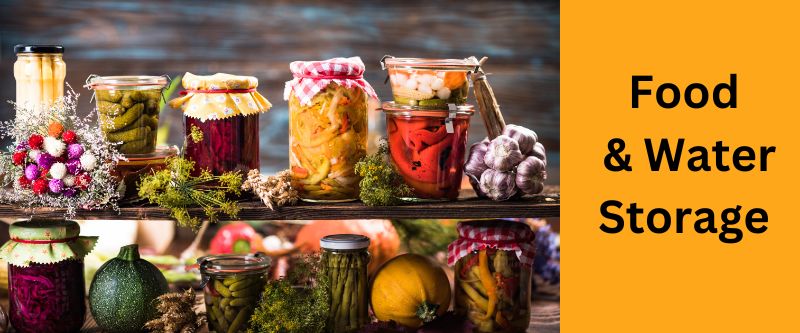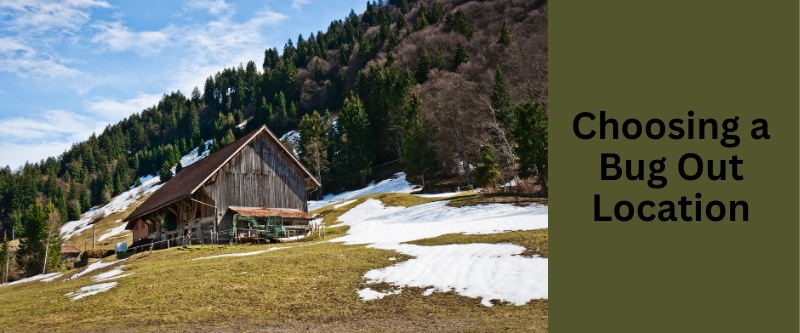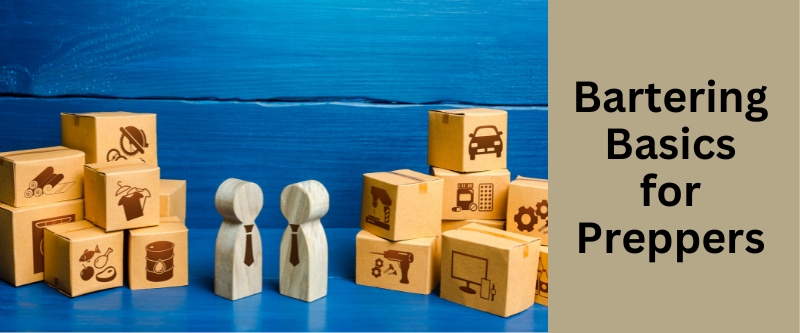Table of Contents
Food & Water Storage Overview
Hello there, fellow prepper! Ever wondered how to ensure your food and water supplies last, especially when the unexpected strikes? Well, you’re in the right place. Let’s put our toe in the waters of food and water storage, and by the end of this, you’ll be a very well-informed beginner!
This is a short article to introduce the Food & Water Storage category of posts on this website. It gives a brief overall view and contains links to more detailed coverage of this general topic.
The Basics of Long-Term Food Preservation
Storing food for the long haul isn’t just about buying a ton of canned goods. It’s about understanding the science behind preservation.
Freeze-Dried Survival Meals
What are they? Essentially, these are meals where the moisture has been zapped out, making them lightweight and long-lasting.
Pros: They’re super light, have a long shelf life, and just need water to prepare.
Cons: Can be a bit on the pricier side.
Shelf-Stable Foods
These are your everyday items that don’t need refrigeration. Think canned beans, grains, and certain packaged goods.
Non-Perishable Food Lists
Grains: Rice, quinoa, oats, Muesli
Canned goods: Vegetables, fruits, beans
Dried fruits and nuts
Did you know? The concept of freeze-drying isn’t new. Ancient Incas used to store their potatoes and other crops in high-altitude areas, where the cold air would naturally preserve them!
Water: The Elixir of Life
Emergency Water Gallons
Always have a stash of water gallons for emergencies. The general rule of thumb? One gallon per person per day.
Water Purification Techniques
Boiling: The age-old method. Just boil and cool.
Portable Survival Water Filters: Great for on-the-go purification.
Water Disinfection Methods: Using purification tablets or UV light.
Survival Water Collection Systems
Rainwater isn’t just for plants! With the right system, you can collect and purify rainwater for drinking. This brings us to…
Rainwater Harvesting for Preppers
Collapsible Water Storage: These are like water tanks but foldable. Great for saving space!
Emergency Hydration Packs: Think of these as Capri Suns for adults. Compact, portable, and lifesaving.
Prepper’s Pantry: Essentials and Organization
Essential Prepper Pantry Items
Bulk Grain Containers: For storing large quantities of grains.
Emergency Water Filtration Kits: For purifying water on the spot.
Prepper Food Labeling Systems: Date and label everything. You don’t want to guess if that can of beans is from 2010 or 2020.
Prepper Meal Planning
It’s not enough to have food on hand. It’s also knowing what to do with it. You have to plan meals around your stored items to ensure a balanced diet. Of course, this is chicken and egg. Your meal planning should inform what you have on hand in the first place.
Prepper Food Rotation Guide
First in, first out: Use older items first.
Regularly check: Ensure no items are expired or spoiled.
Special Considerations
Food Storage Temperature Guidelines
Cool and dry: The golden rule for most stored foods.
Avoid direct sunlight: It can degrade the quality of stored items.
Durable Water Storage Containers
Invest in quality containers that won’t easily break or degrade.
Prepper Food Labeling Systems
Organization is key. Clearly label everything, from purchase dates to expiration dates. Keep a spreadsheet log.
Conclusion: The Bigger Picture
Prepping isn’t about expecting the worst; it’s about being prepared for anything. Whether it’s a natural disaster or just a prolonged power outage, having a well-stocked and organized food and water supply can make all the difference.
Remember, start small. You don’t need to have a year’s supply of food overnight. But with careful planning, a bit of investment, and regular maintenance, you’ll be well on your way to being prepared for anything.
Coming Soon
We will be adding links to topics related to Food & Water Storage, like these.
- The Basics of Long-Term Food Storage: What Every Prepper Should Know
- Water for Preppers
- Choosing the Right Containers for Your Water Storage Needs
- Freeze-Dried vs. Dehydrated Foods: Which Is Best for Preppers?
- The Importance of Rotation in Your Food Storage System
- Water Purification Techniques for the Modern Survivalist
- The Shelf Life of Common Foods: A Comprehensive Guide
- Rainwater Harvesting: A Sustainable Approach to Water Storage
- The Role of Mylar Bags in Prolonging Food Shelf Life
- Understanding the Different Types of Water Filters for Preppers
- Canning 101: Preserving Your Harvest for the Long Haul
- The Benefits of Vacuum Sealing for Food Storage
- Building a Three-Tiered Water Storage System for Emergencies
- Storing Meats and Dairy: Tips and Tricks for Longevity
- The Role of Oxygen Absorbers in Food Preservation
- Water Storage Solutions for Urban Preppers
- Emergency Food Kits: Prepper Planning
- Creating a Balanced Diet with Stored Foods
- The Dangers of Contaminated Water and How to Avoid Them
- Bulk Grain Storage: Tips for Keeping Your Grains Fresh
- The Importance of Diversity in Your Food Storage Plan
- DIY: Building Your Own Water Filtration System
- The Role of Freeze-Drying in Modern Food Preservation
- Storing Water in a Vehicle: Tips and Considerations
- The Science Behind Food Spoilage and How to Prevent It
- Water Disinfection Methods: From Boiling to Chemical Treatment
- The Benefits of Storing Heirloom Seeds for Future Planting
- Understanding the Nutritional Value of Your Stored Foods
- The Pros and Cons of Plastic vs. Metal Water Storage Containers
- Incorporating Superfoods into Your Long-Term Food Storage
- The Importance of Regularly Testing Your Stored Water Supply
- Maximizing Space: Efficient Food Storage Solutions for Small Homes





Leave a Reply